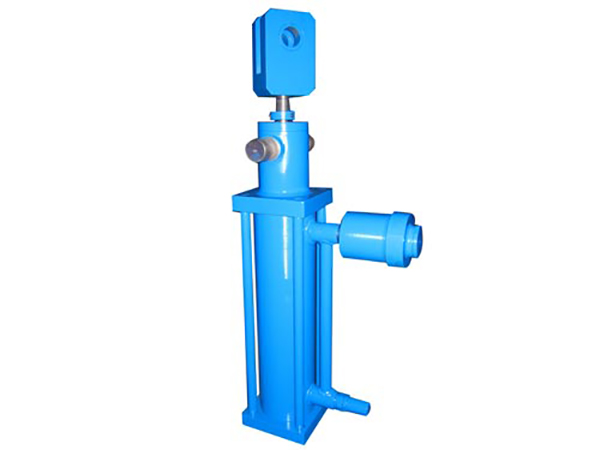With the development of my country’s economy and the acceleration of modernization, the demand for small hydraulic excavators has grown rapidly in recent years. The technology of small excavators has also become more mature and perfect, and the operating conditions are relatively poor. Due to long working hours, Heavy tasks, poor working environment, excessive dust, high temperature, inadequate maintenance and other reasons have resulted in higher and higher requirements for the cooling system of excavator diesel engines.
The efficiency of the excavator's cooling system depends on its use conditions and the design and matching of various components. In order to make the cooling system and various components get a reasonable match, this paper analyzes the structural characteristics of the cooling system, and analyzes the reasons for the high water temperature from the theoretical perspective, and proposes a specific modification plan for the cooling system. Through the cooling system of a small excavator The goal of the program has been proved through experiments, and on-site testing methods are used to make certain improvements to the cooling system to meet the requirements of the system.
1. The structural characteristics of the cooling system
A domestic small hydraulic excavator has a total weight of 4680kg and a standard bucket capacity of 0.18m3. The aircraft is equipped with a YANMAR engine with a power of 27.1kM, a torque of 144Nm and a displacement of 2.19L. The excavator is a new product launched at the beginning of the 21st century. It has the characteristics of good power and high production efficiency. However, occasional high temperature of the engine water tank (commonly known as boiling) appeared in the test experiment. It was initially thought that it was the engine selection. Problem, but referring to other foreign models and the technical data of this engine, through calculations, it is found that the cooling power of the cooling system of this model fully meets the design requirements of the system.
The cooling system of the machine is composed of engine water jacket, water pump, water heat dissipation, fan, hydraulic oil radiator, cooling air duct and corresponding pipelines, etc. The heat transfer medium is driven by the water pump and flows forcibly. The components through which the cooling water flows |—water pump, engine water jacket, water radiator, thermostat and pipes, etc., constitute the cooling air duct of the system, which is one of the most widely used cooling systems in the world.

The machine adopts an engine cooling water radiator (hereinafter referred to as a water tank) and a hydraulic oil radiator coaxially with a suction fan, and a front air conditioning condenser. After the air enters the excavator through the air inlet of the trunk, it enters the water tank through the hydraulic oil radiator, which reduces the temperature difference between the heat dissipation surface of the radiator of the water tank and the airflow; and the superposition of the two radiators increases the air flow Resistance, air flow and velocity entering the surface of the radiator of the water tank are reduced accordingly.
2. Analysis of the causes of excessive water temperature
The main factors affecting the heat dissipation performance of the excavator are the heat dissipation area of the radiator, the ventilation volume of the radiator per unit time, and the performance of the system and water circulation. Since the cooling area of the fan and the radiator is fixed, the structure of the system should be improved to reduce the wind resistance and increase the air intake.
In the design of the excavator cooling system, the inlet water temperature of the radiator of the water tank, that is, the outlet water temperature tw1 of the engine, is clearly stipulated in the accompanying documents of the engine, which is a known quantity; the inlet temperature of the radiator is the ambient temperature The design calculation value ta1 is also clearly required in the design task book, which is also a known quantity. Therefore, the temperature efficiency ε on the air side of the radiator is defined as:
ε=Δta/( tw1 -ta1)
Where Δta is the temperature rise of air passing through the radiator, Δta = ta1-ta2. In this way, the formula for calculating the cooling air volume can be written as
Δta=Q/(3600pacp,a)
Where Q is the total heat that the cooling system should dissipate, kJ/h;
pa——The density of air, kg/m3;
cp,a——Specific heat capacity of air at constant pressure, kJ/(kg•℃);
tw1——The temperature of the water entering the radiator, ℃;
tw2——The temperature of the air entering the radiator, ℃.
Through the observation of the company's formula (2), if other conditions remain unchanged, if the cooling air volume qv, a can be increased by changing the structure, then Δta can be changed. In the case of the same intake air temperature, as the cooling air volume qv, a increases, the air temperature will decrease after passing through the hydraulic oil radiator. It can be seen that as long as the temperature of the air entering the water tank is lowered, under the same conditions, the boiling problem can be solved.
3. Cooling system transformation plan
The radiator is an important part of the cooling system. The positions of the radiator and the fan are shown in Figure 1. Without changing the engine, fan, water tank and hydraulic oil radiator, the author considers the following aspects to transform.
1) Adjust the relative position between the fan blade and the water tank. The change of the relative position will inevitably bring about the change of the wind speed entering the hydraulic oil radiator. The most suitable position is determined by measuring the wind speed at the measuring point.
2) Determine whether there is a gap between the hydraulic oil radiator and the water tank. If there is a gap between the two, air will inevitably enter from the gap, which will inevitably increase the air intake through the water tank. Measure the wind speed at the measuring point through experiments to determine the most suitable gap distance.
3) Adjust the position of the air conditioner condenser, adjust it downward or move it a certain distance away. Since the main action surface of the radiator is on the upper part of the radiator, moving the condenser down or out will inevitably reduce the wind resistance, increase the cooling air volume into the hydraulic oil radiator, and improve the cooling effect to a certain extent. Determine the location of condensation through the wind speed measured by the experiment.
4) By changing the components of the cooling system, such as replacing the protective cover, fan blades, belt pulleys, or even changing the size of the hydraulic oil tank, hydraulic oil radiator, and water tank, the cooling capacity of the entire cooling system can be improved, but It will also increase the cost of the whole machine.
Of course, we can also optimize the design of the radiator to increase its heat transfer coefficient, reduce the wind resistance of the radiator, and make certain improvements to the cooling air duct, such as improving the layout of the excavator trunk and reducing the dead zone of the air duct. , To avoid the phenomenon of hot air returning near the fan, and also have a certain effect on improving the heat dissipation capacity of the cooling system.
4. Test and inspection
The test is carried out at an ambient temperature of about 30°C and an engine speed of 2325r/min. Remove the air conditioner condenser during the test. The right picture in Figure 1 is the front view of the hydraulic unit. The horizontal distance between the anemometer and the end surface of the hydraulic oil radiator is 15mm, point M is the center of the radiator, point N is the inner edge of the oil radiator, and point H is the gap between the oil radiator and the water tank.
From the data, we can clearly see that after the structural transformation of the machine, the wind speed at the measuring points M, N, and H has been greatly improved, indicating that our transformation has achieved a certain effect.
The test data of the inlet water (hydraulic oil) temperature of the water tank and the hydraulic oil radiator before and after the improvement can be seen from Figures 2 and 3, the improved new model, when the ambient temperature is about 30℃, the water inlet of the water tank reaches the thermal equilibrium. The temperature is 80°C, which is 9°C lower than the original machine; the inlet temperature of the hydraulic oil radiator is 80°C, which is 6°C lower than the original machine. It shows that by improving the structure of the new model, the cooling capacity of the entire cooling system has been improved. When evaluating the heat dissipation capacity of the cooling system, most developed countries in foreign countries use the ATB indicator to measure, and the ATB is clearly marked in the random documents of the engine. Therefore, this article also quotes ATB as a measurement index. By consulting the engine data of the excavating model, ATB "=50℃.
The ATB calculation formula is
ATB=(A-B)+C
In the formula, A is the theoretical boiling temperature of the coolant (the value of A is related to the allowable pressure of the radiator water tank cover); B is the inlet water temperature of the engine water tank (when the thermostat is fully opened); C is the test Timely accurate ambient temperature.
The allowable pressure of the pressure cover of the water tank of the excavator is 0.7atm, and A=105℃ is taken at this time. The original ATB=105-89+30=46℃; the modified ATB=105-80+31=56℃.
After the transformation, the ATB value of the cooling system has increased by 10°C; this is equivalent to a model equipped with a new cooling system whose peak engine operating temperature is 10°C lower than the original model under the same ambient temperature. By adjusting the relative position of the fan blade and the water tank, the gap between the hydraulic oil radiator and the water tank, the position of the air conditioner condenser, and the use of the belt pulley to replace the belt, the cooling qv, a is improved, and the engine water tank is successfully solved. The problem of high temperature.
Business manager phone:13470397782 Office phone:0419-7148218ext.802 mailbox:slcxjx@163.com
Business office phone:0419-2621118 Technical business phone:0419-7148218ext.805 address:Shaling Town, Taizihe District, Liaoyang City
